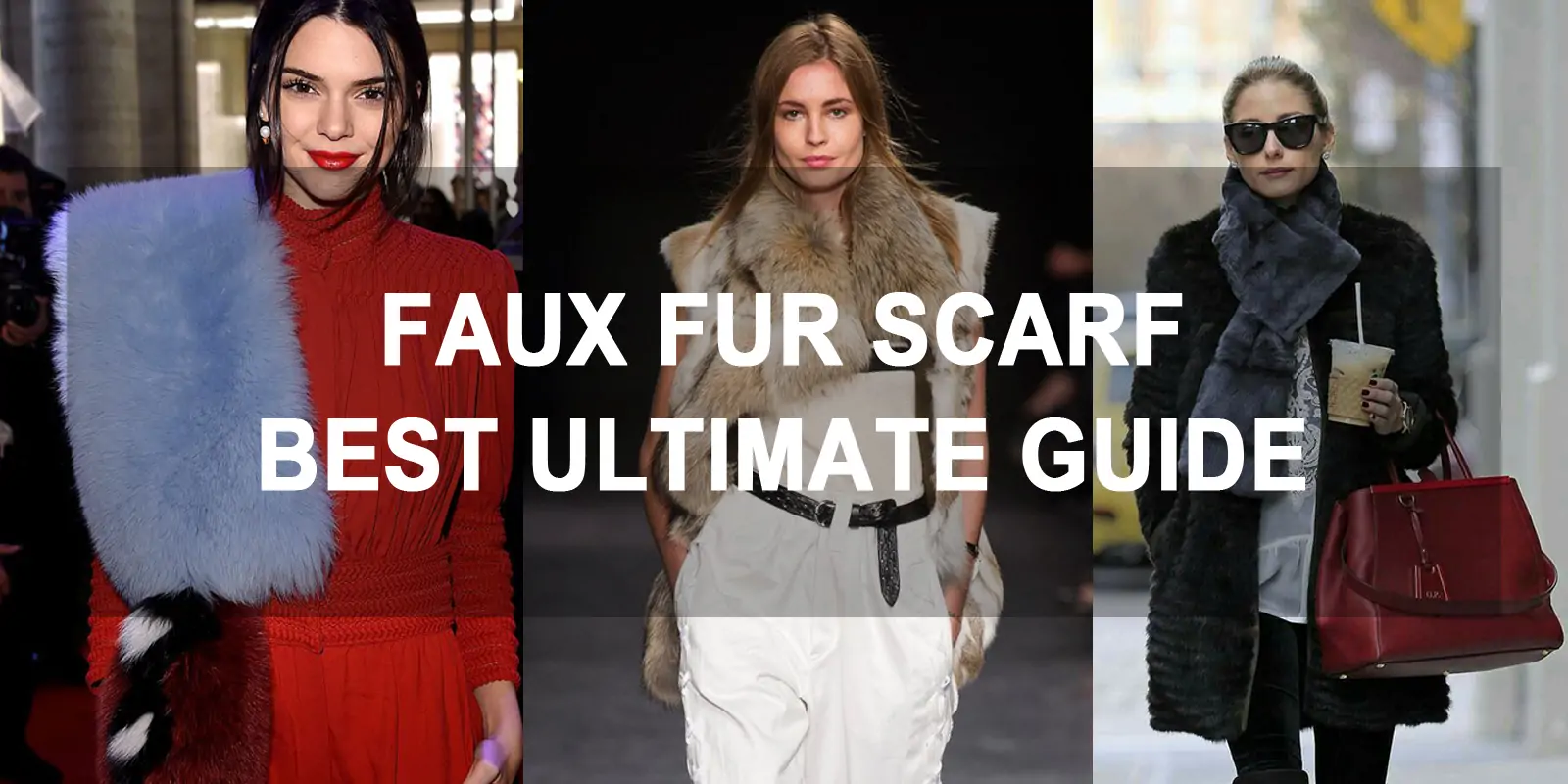A faux fur scarf is a stylish and cozy addition to any winter wardrobe, known for its plush texture and warmth. Available in various colors and patterns, it offers a touch of luxury and elegance, making it a perfect accessory for both casual and formal outfits during the colder months.
- What Is Faux Fur scarf ?
- History of Faux Fur
- How to Make a Faux Fur Scarf ?
- The Faux Fur Scarf Trends
- Different Types of Faux Fur Scarf
- Popular Faux Fur Scarf Brands
- How to Wear Faux Fur Scarf
- Where to Buy Faux Fur Scarf
- Tips for Caring for Your Faux Fur Scarf
- How to Distinguish Between Real Fur & Faux Fur Scarf ?
What Is Faux Fur scarf ?
A faux fur scarf is a fashion accessory made from synthetic materials designed to mimic the look and feel of real animal fur. Faux fur, also known as fake fur, is created from various synthetic fibers, providing a cruelty-free and often more affordable alternative to genuine fur.
These scarves are known for their plush, warm, and luxurious texture, making them a popular choice for adding a touch of elegance and warmth to winter outfits.
Faux fur scarf come in a variety of colors, patterns, and styles, and can range from long, fluffy wraps to shorter, more subtle neck accessories. They are a fashionable and ethical choice for those who appreciate the aesthetic of fur but prefer to avoid animal products.
History of Faux Fur
The history of fur fashion is long and complex, dating back to ancient times when fur was primarily used for warmth. Over time, fur evolved into a symbol of wealth and status, especially among the nobility in medieval Europe. By the 18th and 19th centuries, with the expansion of global trade, fur became a luxury item.
In the 20th century, fur reached the height of its popularity. It was a staple in high fashion, with designers incorporating it into various garments and accessories. The mid-20th century saw fur as a status symbol in Hollywood and among the elite, further fueling its demand.


However, the late 1950s, as Europe’s economy recovered post-World War II, there was a surge in the pursuit of luxury lifestyles, which was notably reflected in the increasing demand for fur. This demand led to the endangerment and even extinction of some animal species, causing a significant depletion of natural fur resources. Amidst this environmental and ethical crisis, the invention of faux fur marked a significant turning point.
The credit for the first creation of faux fur goes to George Borg, a visionary who saw the urgent need for an alternative to natural fur. Despite its relatively short history, the development of faux fur has been rapid and impactful. China, in particular, has become a major player in the processing and consumption of faux fur, holding a significant share in the global market.
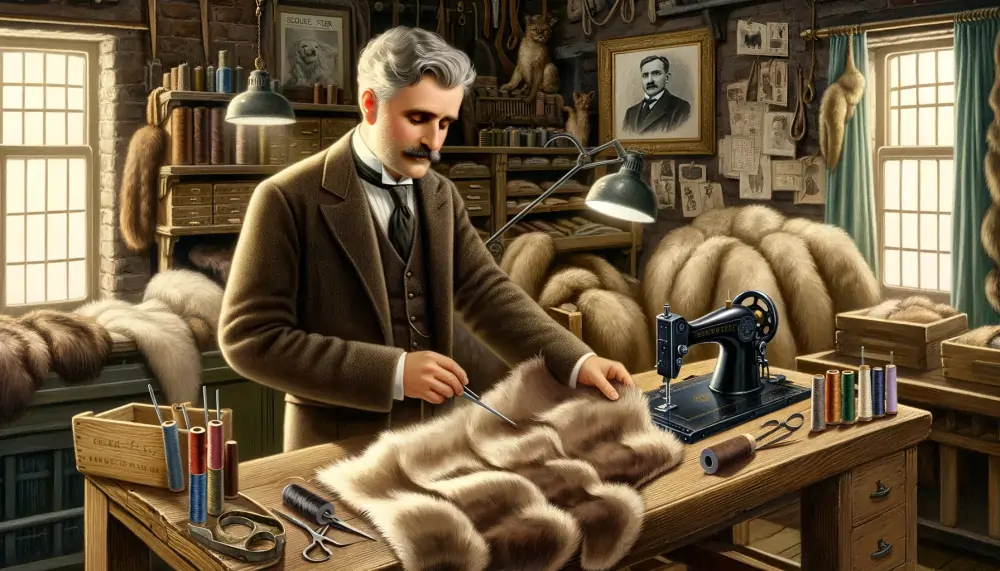

The introduction of faux fur has fundamentally addressed the issue of animal cruelty and environmental protection. In comparison to natural fur, faux fur offers several advantages: it tends to be softer, lighter in weight, and more fashion-forward in design.
Additionally, it boasts good thermal insulation and breathability, overcoming the maintenance challenges often associated with natural fur. The emergence of faux fur represents not just a technological advancement but also a shift towards more ethical and sustainable fashion choices.
How to Make a Faux Fur Scarf ?
Making a faux fur scarf is a great project for those looking to add a touch of luxury to their wardrobe without the ethical and financial cost of real fur. Here’s a simple step-by-step guide:
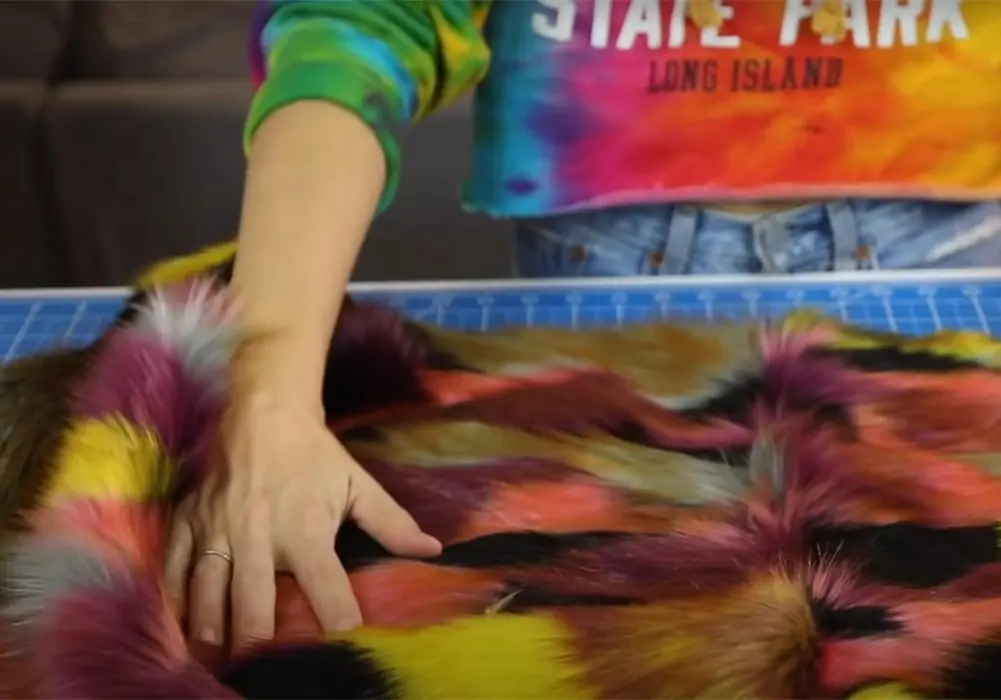

Materials Needed:
- Faux fur fabric (1/2 to 1 yard depending on desired length and volume)
- Lining fabric (satin or any soft fabric for the backside, same size as fur)
- Sewing machine or needle and thread
- Fabric scissors
- Pins
- Measuring tape
- Fabric marker or chalk
Instructions:
- Measure and Cut:
- Decide on the length and width of your scarf. A standard size might be 60 inches long by 12 inches wide.
- Use the measuring tape and fabric marker to mark your measurements on the back of the faux fur.
- Cut the faux fur and lining fabric to size, being careful to cut the fur from the backside to avoid cutting the hairs themselves.
- Pin Together:
- Lay the faux fur piece and the lining right sides together, aligning the edges.
- Pin around the edges to keep the fabric from shifting. Leave a gap of about 3-4 inches un-pinned for turning the scarf right-side out later.
- Sew:
- Sew around the pinned edges with a 1/2 inch seam allowance. Remember to leave the gap unsewn for turning.
- If you’re using a sewing machine, you may want to use a walking foot to help manage the thick layers.
- Trim and Turn:
- Trim the excess fabric from the edges to reduce bulk, especially at the corners.
- Carefully turn the scarf right-side out through the gap.
- Finish the Scarf:
- Hand stitch the gap closed or use a ladder stitch for an invisible closure.
- Gently brush the fur at the seams to hide the stitching.
- Optional Steps:
- Add closures like buttons, snaps, or hooks if you want to secure your scarf in place.
- You can also add embellishments like pom-poms or tassels for a fun touch.
Tips:
- When working with faux fur, try to cut only the backing and not the actual fur.
- Shake out the faux fur after cutting to remove any loose hairs.
- Sew with a longer stitch length to avoid matting the fur.
- Always test your machine settings on a scrap piece of faux fur before you begin your project.
What Is Faux Fur scarf Made Of ?


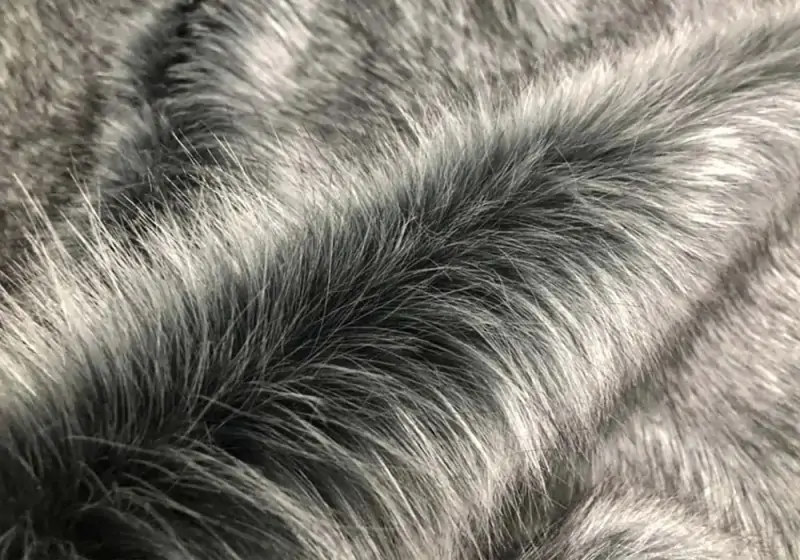

Faux fur scarves are crafted from synthetic fibers such as acrylic, modacrylic, polyester, and nylon to mimic the feel and insulation of real fur. Acrylic and modacrylic are favored for their softness, warmth, and improved characteristics like fire resistance and dyeability. Polyester often forms the durable backing, while nylon adds strength.
These fibers are woven using two main techniques: tuft feeding and yarn cutting loop. The tuft feeding method creates a “V” shaped loop that secures the faux fur to the base, ensuring minimal shedding and a cost-effective production with high efficiency. The yarn cutting loop method, with its W or V-pattern organization, results in a plush, full appearance and fur that’s less likely to shed due to its firm integration into the ground weave.
Both weaving methods aim to deliver the aesthetic of real fur with the benefits of synthetic production, providing a humane, economical option for fur-like textiles in fashion.
How to Style a Faux Fur Scarf ?
Styling a faux fur scarf can add a touch of glamour and sophistication to any outfit. Here are some tips on how to style one:
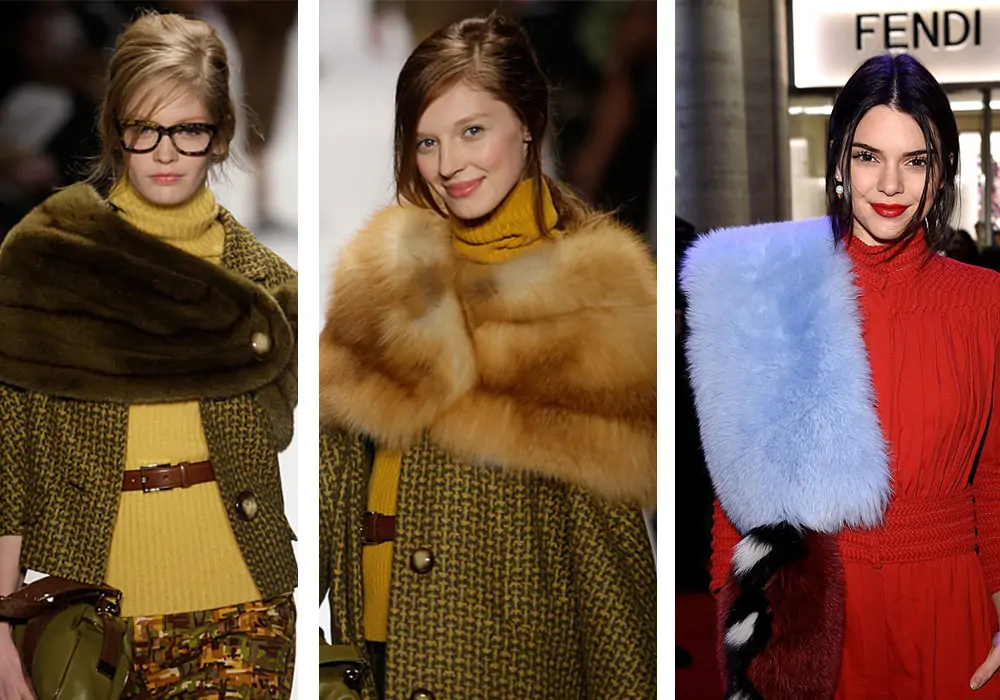

- Classic Drape: Simply drape the scarf over your shoulders and let it hang loosely on both sides. This is perfect for a touch of elegance over a coat or a dress.
- Belted:
- Lay the scarf over your shoulders and secure it at the waist with a belt. This not only keeps the scarf in place but also accentuates your waistline.
- One-Sided Toss:
- Drape the scarf over one shoulder with one end hanging at the front and the other at the back. This asymmetrical look is very chic.
- Looped:
- Fold the scarf in half and drape it around your neck. Pull the loose ends through the loop created by the fold. This is a snug way to wear it and keeps you warm.
- Layered Look:
- Wear it under a coat or jacket with just the front ends visible for a more subtle fur accent.
- Head Wrap:
- For an unconventional approach, wrap the scarf around your head and neck like a hood, keeping your head and ears warm.
- Shoulder Knot:
- Drape the scarf around your shoulders and tie a loose knot on one side for an off-kilter, stylish look.
- Paired with Casuals:
- Break the norm by wearing your faux fur scarf with a plain tee or a denim jacket for a mix of casual and luxe.
Remember to balance your outfit when wearing a faux fur scarf, since the scarf itself is a statement piece. Keep the rest of your look simple to let the scarf stand out
The Faux Fur Scarf Trends
Faux fur scarves have become a fashionable and ethical accessory choice in recent years, reflecting the growing trend towards more sustainable and animal-friendly fashion. Here are some of the latest trends in faux fur scarves:
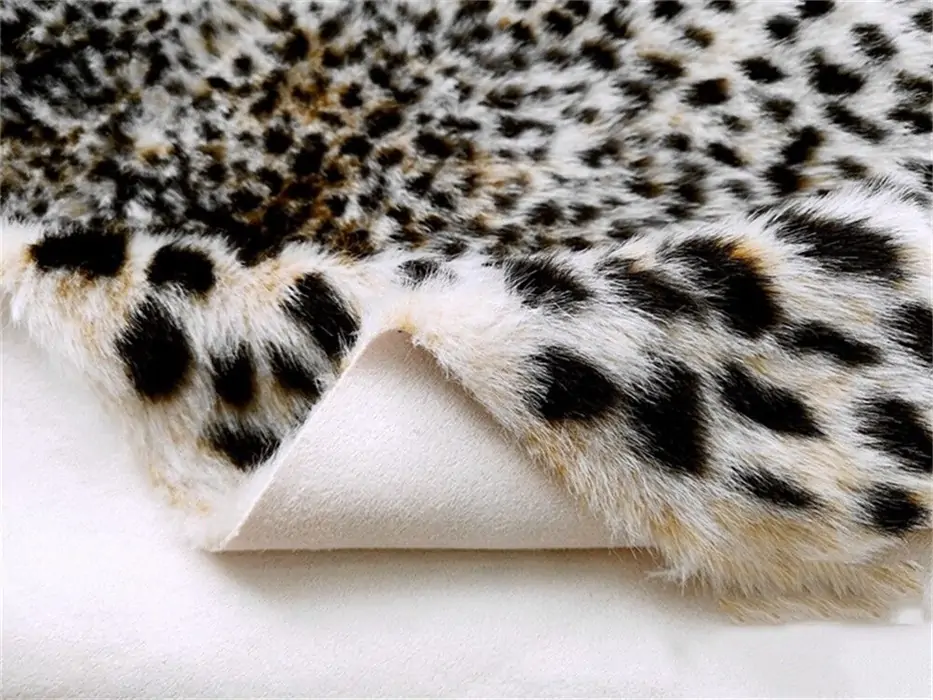

- Bold Colors: Moving away from traditional fur colors, faux fur scarves are now available in vibrant, bold hues like electric blue, hot pink, and emerald green. These colorful scarves add a pop of color to any outfit and make a strong style statement.
- Mixed Textures: Many designers are combining different textures within a single scarf. For instance, a scarf might feature sections of faux fur combined with knit or velvet sections, offering a unique and tactile experience.
- Oversized Styles: Large, voluminous faux fur scarves that make a dramatic impact are in vogue. These oversized scarves can be wrapped around multiple times, providing both warmth and a bold fashion statement.
- Animal Print Revival: While animal print has always been popular, it has seen a resurgence in faux fur scarves. Leopard and tiger prints, in particular, are trendy, providing a classic look without any harm to wildlife.
- Eco-Friendly and Sustainable: With a growing awareness of sustainability, eco-friendly faux fur made from recycled materials is gaining popularity. Consumers are increasingly looking for ethical fashion choices.
- Versatility in Wear: Faux fur scarves are no longer just for formal or evening wear. They are being styled with casual outfits, like jeans and a t-shirt, for a chic, everyday look.
- Patchwork Patterns: Scarves featuring a patchwork of different faux fur textures or colors are becoming popular, offering a bohemian and artsy aesthetic.
- Minimalist Designs: For those who prefer subtler fashion statements, minimalist faux fur scarves in neutral tones like beige, gray, and black are also trending.
These trends reflect the versatility of faux fur scarves and their ability to cater to a wide range of personal styles while maintaining an ethical stance in fashion.
Different Types of Faux Fur Scarf
Faux fur scarves, each with their distinct style and level of coziness, come in various types:
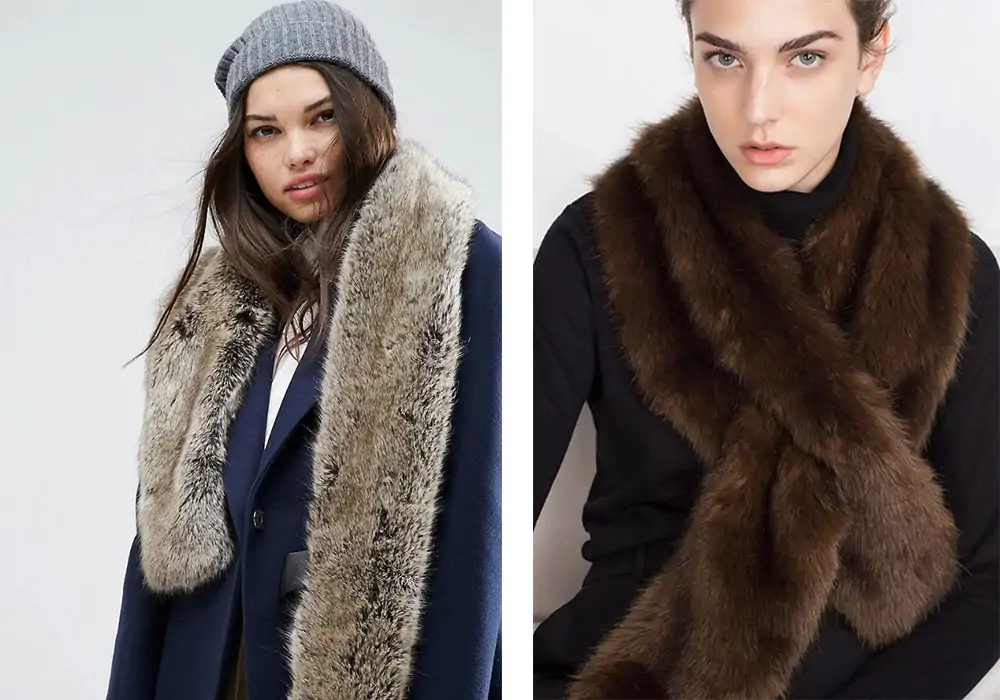

- Infinity Scarf: A continuous loop design, offering effortless styling and a contemporary look.
- Stole: A long and wide piece, draped elegantly over the shoulders, for classic glamour.
- Snood: Combines a scarf and hood, versatile and perfect for added warmth.
- Collar Scarf: Sits snugly around the neck like a collar, instantly elevating any outfit.
- Pull-Through Scarf: A shorter design with a slit for one end to pull through, ensuring a secure and stylish fit.
- Shawl Scarf: Large enough to wrap around, it provides ample warmth and versatile styling.
- Patterned Scarf: Features animal prints or abstract designs for a statement look.
- Textured Scarf: Comes in various textures like shaggy, smooth, or ribbed, offering diverse aesthetic appeal.
Each type of Faux Fur Scarf is a unique accessory, perfect for adding warmth and style to winter outfits.
Popular Faux Fur Scarf Brands
Several brands are popular for their high-quality and stylish faux fur scarves. Here are some notable ones:
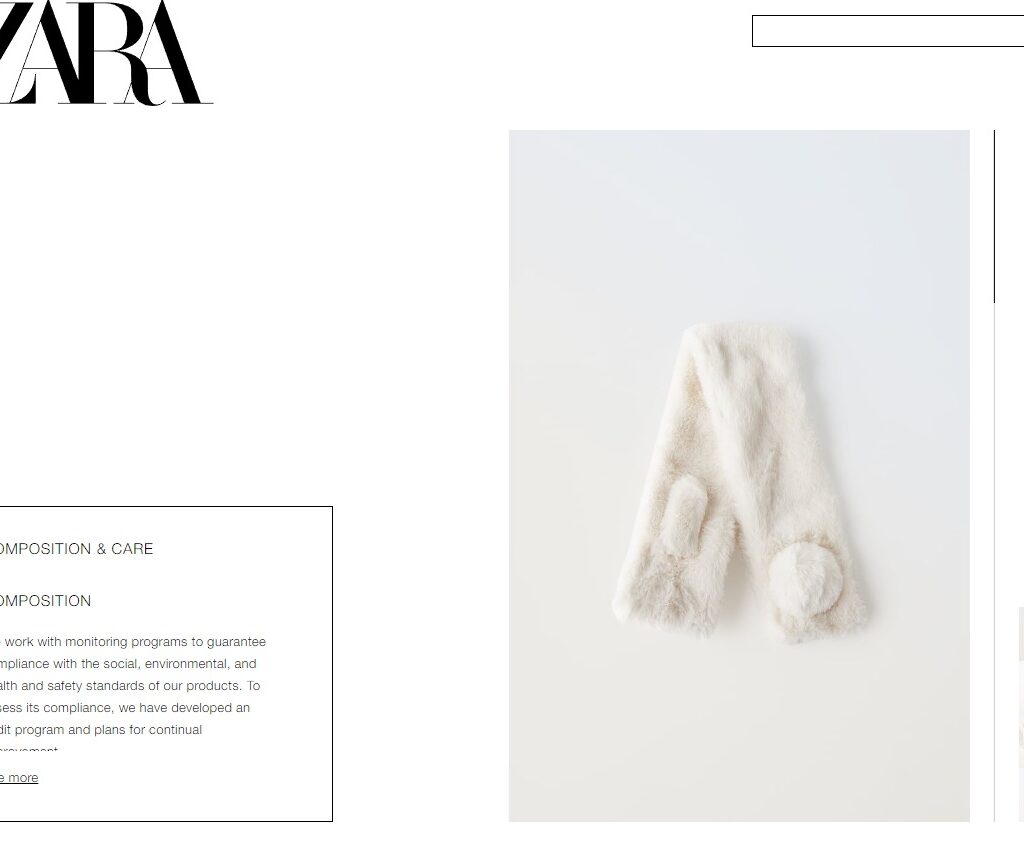

- Apparis: Known for their vibrant colors and plush textures, Apparis offers a range of fashionable faux fur scarves.
- Shrimps: This British brand is renowned for its playful and unique designs, often featuring whimsical patterns and bold colors.
- Donna Salyers’ Fabulous Furs: An established brand offering a wide range of faux fur accessories, including luxurious scarves.
- Unreal Fur: An Australian brand, they’re popular for their commitment to ethical fashion and high-quality faux fur products.
- Charlotte Simone: This brand is known for its signature popsicle scarves and uses a mix of colors and textures in their designs.
- Helen Moore: A British brand that offers handcrafted faux fur accessories, known for their quality and attention to detail.
- Topshop: Offers trendy and affordable faux fur scarves, making it a go-to for fashion-forward styles on a budget.
- Zara: Known for their fast-fashion approach, Zara offers contemporary and stylish faux fur scarves that align with the latest trends.
How to Wear Faux Fur Scarf
A faux fur scarf is a versatile and stylish accessory that can elevate any outfit. For a classic look, drape it over your shoulders or loop it around your neck for added warmth. Pair it with a coat or jacket, letting it sit atop the collar for a touch of luxury.
For more sophistication, secure it with a belt at the waist or wear it as a shawl for formal events. The pull-through style offers a tidy and snug fit, perfect for a polished appearance. With its ability to blend elegance and coziness, a faux fur scarf is an essential accessory for enhancing your winter wardrobe.


Faux Fur Scarf – 20 Ways To Wear
Where to Buy Faux Fur Scarf
You can buy a faux fur scarf from a variety of places, each offering a range of styles and price points:


- Scarf.com: This specialized website offers a range of scarves, potentially including faux fur options. It’s a dedicated platform for scarf enthusiasts, providing a variety of styles and materials.
- Fashion Retailers: Stores like Zara, H&M, and Topshop often carry trendy and affordable faux fur scarves.
- Department Stores: Retailers like Nordstrom, Macy’s, and Bloomingdale’s offer a selection of faux fur scarves from various brands, including luxury options.
- Online Marketplaces: Websites like Amazon, eBay, and Etsy are great for finding a wide range of faux fur scarves, from handmade items to well-known brands.
- Specialty Boutiques: Boutique stores often carry unique and high-quality faux fur scarves that might not be found in larger retail stores.
- Brand Stores: Buying directly from brands known for faux fur, like Apparis, Shrimps, or Donna Salyers’ Fabulous Furs, can provide a wider selection of their products.
- Second-hand Stores: For eco-conscious shopping, thrift stores and online platforms like Poshmark or Depop can be great for finding pre-loved faux fur scarves.
- Designer Outlets: For discounted designer scarves, outlets can be a good option, though their inventory can be hit or miss.
When shopping for a faux fur scarf, consider the style, color, and length that best suit your needs, and always check the care instructions to ensure it stays in great condition.
Tips for Caring for Your Faux Fur Scarf
Caring for your faux fur scarf properly will ensure it remains beautiful and lasts longer. Here are some essential tips:
- Read the Care Label: Always start by checking the manufacturer’s care instructions on the label.
- Gentle Cleaning: If the scarf is machine washable, use a gentle cycle with cold water and a mild detergent. If it’s not machine washable, opt for hand washing or spot cleaning with a soft cloth.
- Avoid Heat: Never use hot water or a hot dryer, as heat can damage the fibers. If machine drying, use a no-heat or air-dry setting. It’s generally safer to air dry by laying the scarf flat.
- Brushing the Fur: After washing and drying, gently brush the fur using a soft-bristled brush to maintain its fluffiness and prevent matting.
- Storing Properly: Store the scarf in a cool, dry place. Avoid compressing it under heavy items to prevent the fur from getting crushed.
- Avoiding Chemicals: Keep the scarf away from harsh chemicals, such as bleach, which can damage the fibers.
- Professional Cleaning: For deep cleaning or if the scarf is particularly delicate, consider professional cleaning.
- Spot Cleaning: For small stains, spot clean with a mild detergent and cold water, then air dry.
By following these care tips, your faux fur scarf will maintain its luxurious look and feel
How to Clean Faux Fur Scarf
Cleaning a faux fur scarf requires careful handling to preserve its texture and appearance. Here’s how you can clean it:
- Check the Care Label: First, read the manufacturer’s care instructions. Some faux fur can be machine washed, while others require hand washing or dry cleaning.
- Shake it Out: Gently shake the scarf to remove any loose dirt or debris.
- Spot Cleaning: For small stains, use a mild detergent mixed with water. Apply the solution to the stained area with a soft cloth or sponge, dabbing gently. Avoid rubbing as it can damage the fur.
- Hand Washing: If the scarf is suitable for hand washing, fill a basin with cold water and a small amount of mild detergent. Submerge the scarf and gently agitate the water with your hands. Do not wring or twist the fur, as this can damage it.
- Rinsing: Rinse the scarf thoroughly in cold water until all soap residue is removed.
- Drying: Avoid wringing out the water. Instead, gently press the excess water out and then lay the scarf flat on a clean towel. Reshape it as needed and let it air dry completely. Do not use a dryer, as the heat can harm the fur.
- Fluffing the Fur: Once dry, fluff the fur gently with your fingers or use a wide-tooth comb or soft-bristled brush to restore its natural fluffiness.
- Avoid Heat and Direct Sunlight: Never expose faux fur to direct heat or sunlight as it can cause damage and fading.
If you’re unsure about the type of faux fur or the cleaning method, it’s always safest to take it to a professional cleaner specializing in faux fur and delicate fabrics.
How to Distinguish Between Real Fur & Faux Fur Scarf ?
To distinguish between a faux fur scarf and a natural fur scarf, consider the following methods:
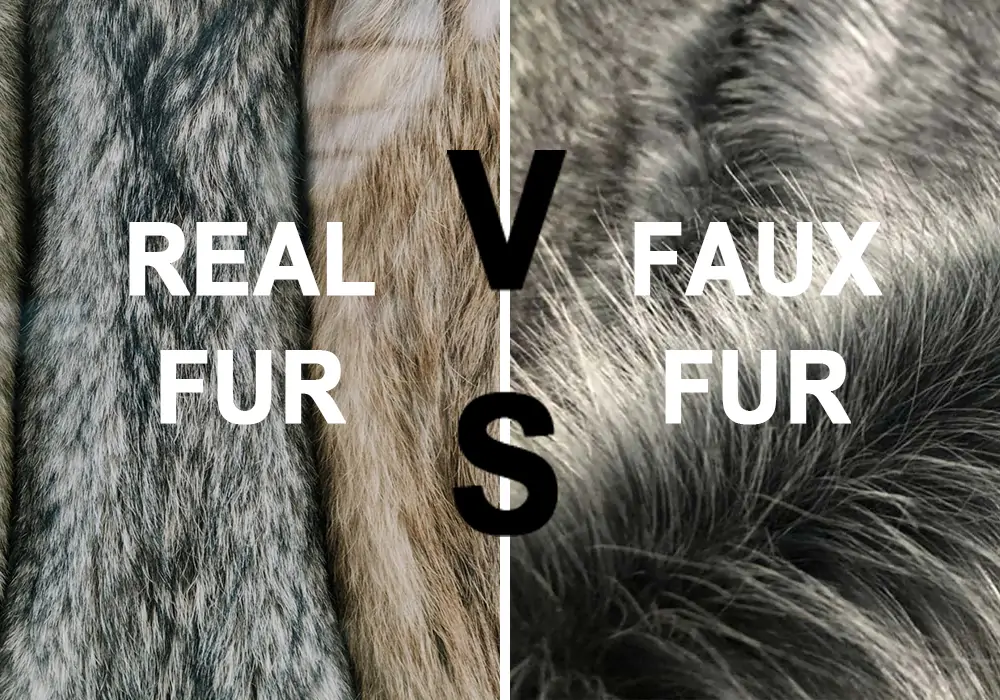

- Burn Test: This traditional method involves plucking a few hairs from the scarf and burning them. Natural fur typically smells like singed hair when burned, whereas faux fur tends to melt and emit a chemical odor. However, this method is often impractical as most sellers won’t allow you to remove hairs from the product for testing.
- Touch Test: Natural animal fur is usually soft to the touch, while faux fur can be more plastic-like. In high humidity, some synthetic furs might feel sticky. But be aware that advancements in manufacturing have made faux fur increasingly similar to natural fur, making it sometimes difficult to tell the difference by touch alone.
- Check the Base: Look at the base of the fur. Natural fur will show the skin of the animal, often with wrinkles, while faux fur will typically have a fabric backing.
Each of these methods has its advantages and disadvantages, so carefully observing the product and asking the seller for specific information is usually the most reliable approach when purchasing.
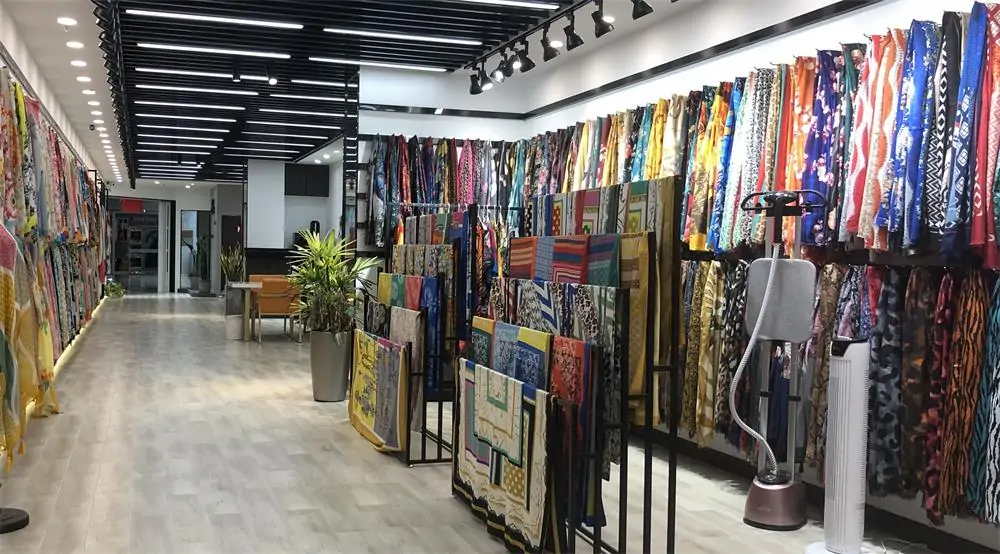

Get 200% Profit Margin !!
Don’t Miss out on the Opportunity to Double Your Profit Margin!
Start Your Own Scarf Business, Get 200% Profit Margin !!

